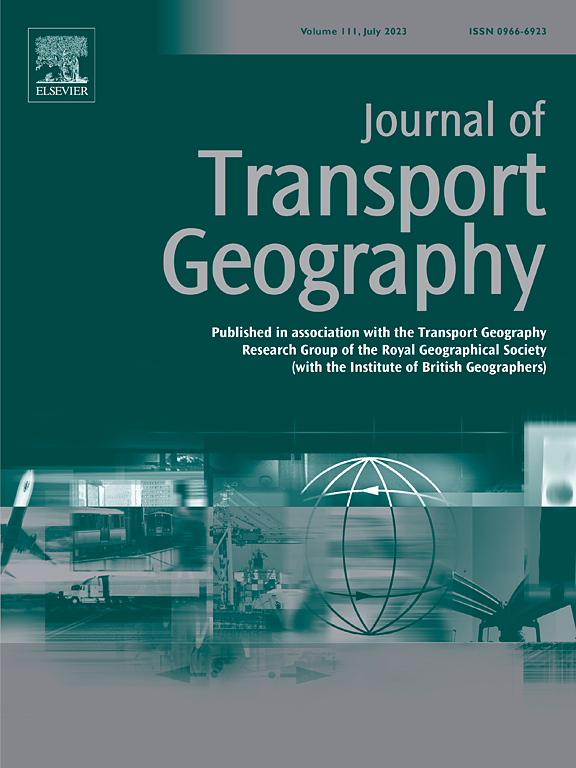大城市边缘农村地区居民的流动性约束:来自中国北京的证据
IF 5.7
2区 工程技术
Q1 ECONOMICS
引用次数: 0
摘要
城市边缘地区农村居民的流动,使他们能够获得公共服务,是促进城乡公平和促进可持续发展的一个重要问题。然而,快速发展的特大城市的边缘农村居民往往受困于被忽视的流动性劣势,在流动性研究和政策中仍然明显缺席。本文利用北京40个边缘村的第一手调查数据,探讨了其流动性特征及其影响因素。结果显示,这些居民从农村到城市的流动性出乎意料地低于中国更偏远的农村地区。村民的旅游目的地大多局限于邻近的乡镇,尤其是购物和娱乐。他们无法很好地利用市中心的公共服务。交通可及性、服务可及性和家庭收入是影响农村居民流动性的最重要因素。大城市内部的一些制度因素,如汽车购买和电动汽车使用的限制、人口和产业的分散以及村级服务设施的退出,可能会加剧居住在边缘农村地区的流动性挑战。这些见解强调,必须更多地关注边缘农村地区的差异化土地利用、交通和产业政策,以维持特大城市地区的包容性交通发展。本文章由计算机程序翻译,如有差异,请以英文原文为准。
Mobility constraints of residents in marginal rural areas of megacities: Evidence from Beijing, China
The mobility of rural residents in urban fringe to permit them to access public services is an important issue in promoting urban–rural equity and contributing to sustainable development. However, marginal rural residents of fast-developing megacities, often trapped in neglected mobility disadvantages, remain conspicuously absent from mobility research and policies. This paper addresses this gap by exploring their mobility features and determinants using first-hand survey data from 40 marginal villages in Beijing. The results show that the rural-to-urban mobility of these residents is unexpectedly lower than their counterparts in more remote rural areas of China. Villagers' travel destinations are mostly confined to neighbouring villages and townships, especially for shopping and recreation. They do not have good access to public services in the city centre. Transport availability, service accessibility and household income are the most influential factors undermining the mobility of rural residents. Some institutional factors within megacities, such as restrictions on car purchase and electric vehicle usage, population and industrial dispersion, and village-level service facilities withdrawal, may exacerbate mobility challenges for those residing in marginal rural areas. These insights underscore the imperative for more policy attention on differentiated land use, transport and industrial policies in marginal rural areas to sustain inclusive transport development of megacity regions.
求助全文
通过发布文献求助,成功后即可免费获取论文全文。
去求助
来源期刊

Journal of Transport Geography
Multiple-
CiteScore
11.50
自引率
11.50%
发文量
197
期刊介绍:
A major resurgence has occurred in transport geography in the wake of political and policy changes, huge transport infrastructure projects and responses to urban traffic congestion. The Journal of Transport Geography provides a central focus for developments in this rapidly expanding sub-discipline.
 求助内容:
求助内容: 应助结果提醒方式:
应助结果提醒方式:


